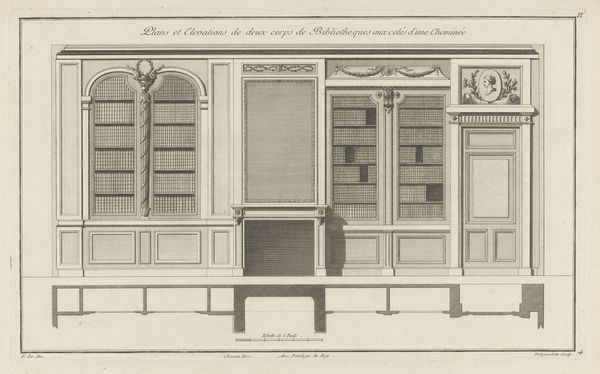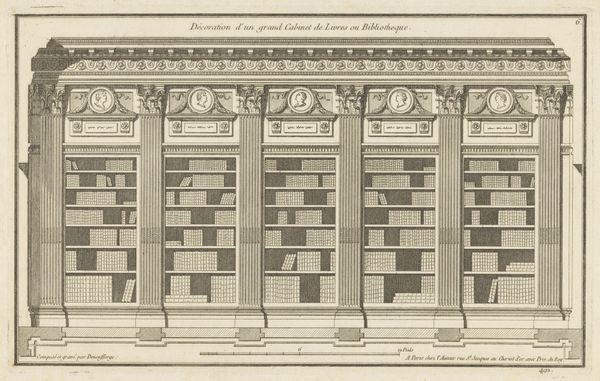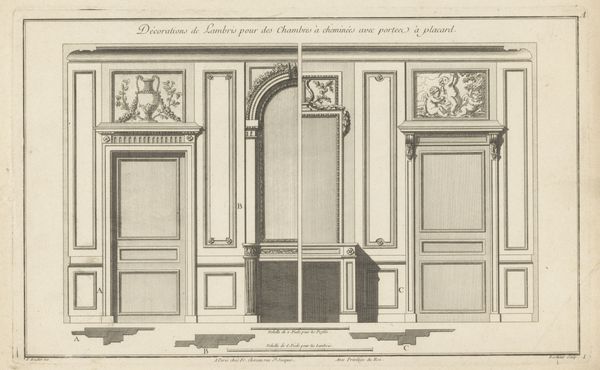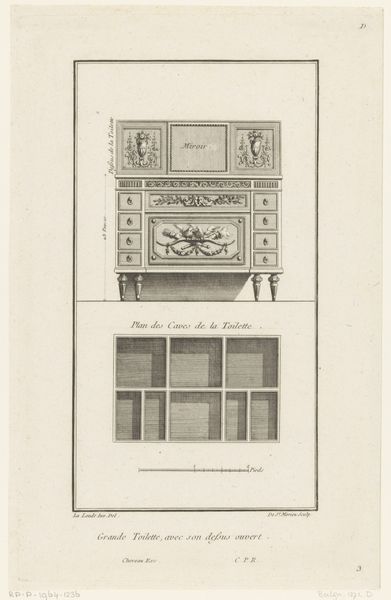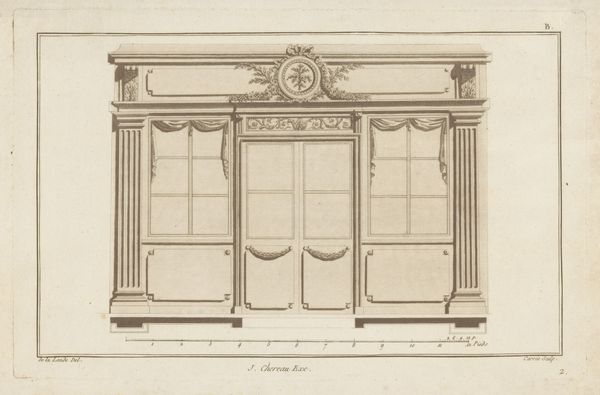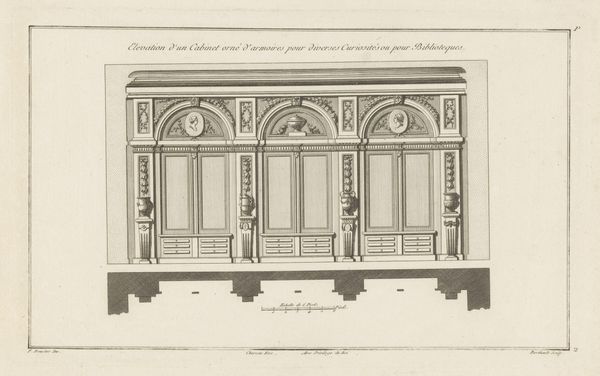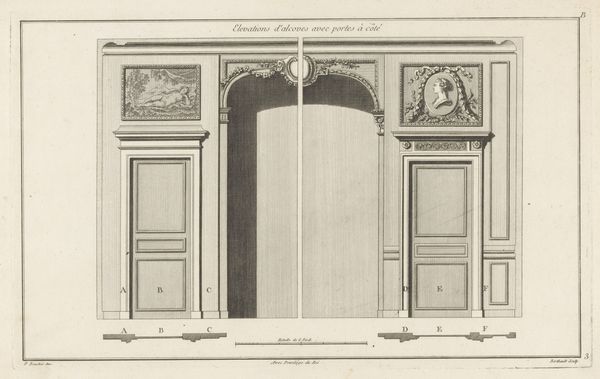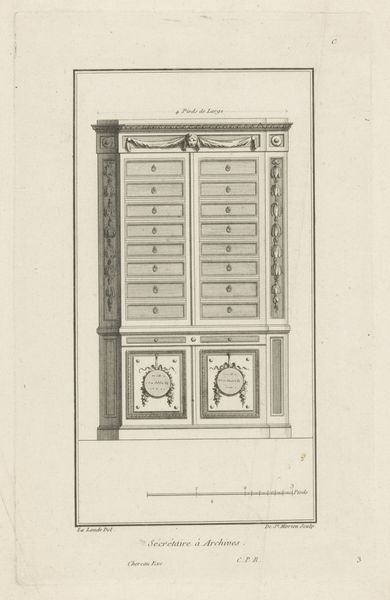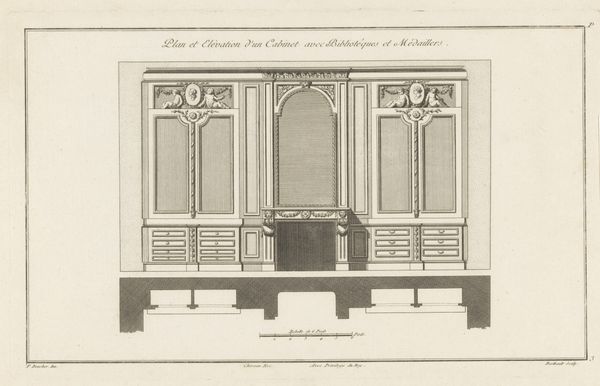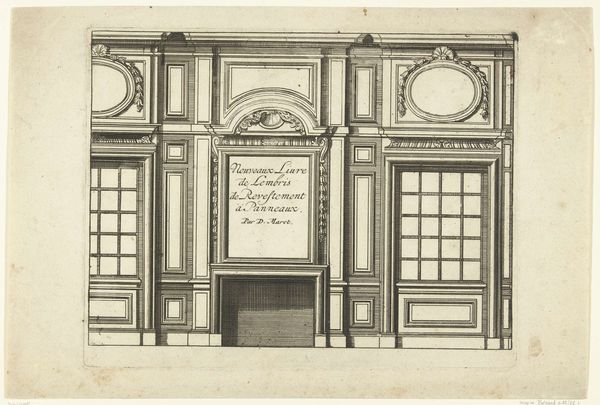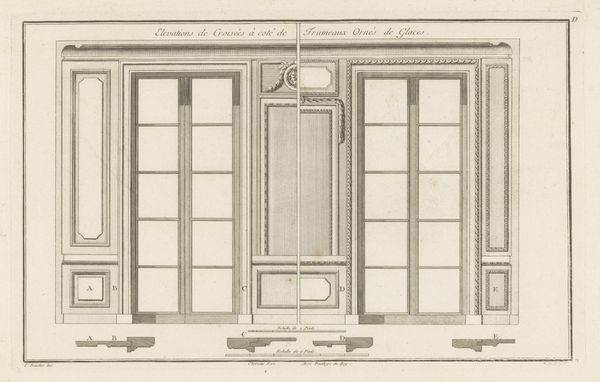
drawing, print, engraving, architecture
#
architectural sketch
#
drawing
#
neoclacissism
# print
#
old engraving style
#
geometric
#
line
#
cityscape
#
engraving
#
architecture
Dimensions: height 222 mm, width 360 mm
Copyright: Rijks Museum: Open Domain
Editor: This print, “Deur en twee boekenkasten” by Pierre Gabriel Berthault, likely created between 1752 and 1794, shows an architectural plan for a room featuring a door flanked by bookshelves. It feels very formal and ordered. What can you tell me about this work? Curator: It’s tempting to see this engraving solely as an architectural drawing, but I see it reflecting power structures of the era. Consider that libraries and books were highly exclusive. This wasn’t a neutral space, but a site of knowledge controlled by a privileged few, predominantly white men. Do you think the neoclassical style, with its emphasis on order and symmetry, reinforces this sense of hierarchy? Editor: That’s a fascinating point. I hadn't considered the exclusivity aspect so directly linked to the architecture itself. The symmetry definitely feels imposing, and the portraits above the shelves could be seen as reinforcing established authority figures. Curator: Exactly. And beyond that, the idealization of classical forms was often used to legitimize existing power structures. The architecture literally embodies those structures, becoming a stage for intellectual and political dominance. Editor: So the very design promotes social stratification. Were there counter-movements, architects who used design to challenge this? Curator: Absolutely! Looking at design movements that favored organic or vernacular architecture against Neoclassicism reveals architects interested in undermining, whether implicitly or explicitly, dominant class and cultural norms. Editor: That shifts my perspective quite a bit. I was initially just looking at lines and forms. Curator: Exactly! It's crucial to remember the social and political context. What appears as simple design becomes a visual manifestation of power dynamics. I am taking away a desire to look further into art from marginalized designers that critiqued neoclassicism.
Comments
No comments
Be the first to comment and join the conversation on the ultimate creative platform.
